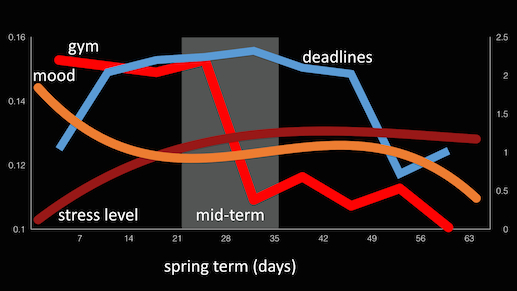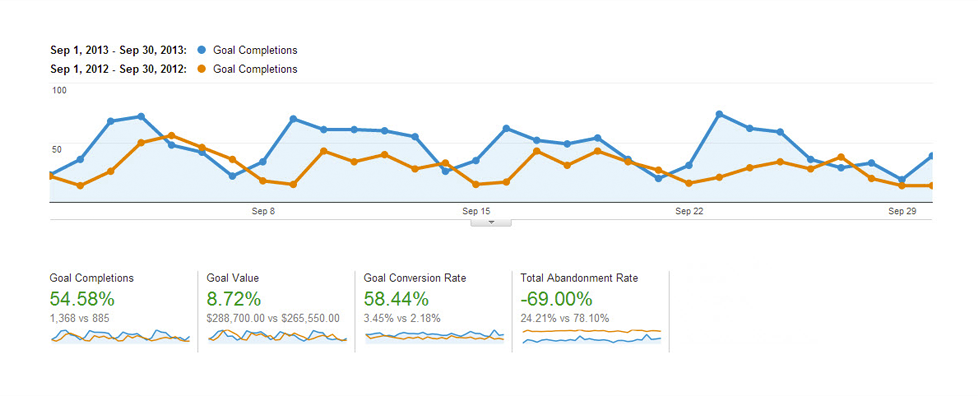Schools were among the earliest adopters of data analytics nearly a decade ago, and as society has moved increasingly online, innovative institutions have been expanding data-driven decision-making to nearly all aspects of campus life and operations. With declining budgets, increased competition and other pressures, colleges and universities simply can’t afford to ignore the business opportunities presented by big data.
Analytics tools can help schools measure the impact of their initiatives in real-time and make strategic adjustments for continuous improvement. Combining these insights with a robust ‘customer’ relationship management (CRM) system, allows schools to collect data, track and automatically follow up with prospective and current students with personalized communications.
It’s now possible to collect an abundance of digital data from numerous diverse sources, including college board demographic info, admissions office interactions, financial aid files, and all types of behaviour on your website(s) and social media networks. A growing number of universities are using predictive modeling software to manage and leverage this wealth of complex data, focusing limited resources on prospects with a higher likelihood of enrolling.
But that’s just the beginning – predictive analytics has the potential to optimize student retention, financial aid levels, curriculum scheduling, alumni relations and much more.
Understanding the Potential of Predictive Analytics
Predictive analytics is the use of statistical techniques to analyze patterns in historical and transactional data, identifying risks and opportunities to guide decision making. By capturing relationships between explanatory variables from past occurrences, unknown outcomes can be predicted. Other industries have been using predictive analytics for years, such as financial services companies using credit scores to assess the likelihood of customers making payments on time.
Colleges and universities can similarly analyze available data to determine which applicants are most likely to enrol or which students are at risk of attrition, so intervention steps can be proactively taken. Small colleges with low faculty-to-student ratios can more easily identify signs like lack of class participation to take corrective action, but larger campuses are increasingly depending on predictive analytics to connect the dots.
Georgia State University has been a leader in leveraging data to provide individualized attention to the students who need it most. Over the past ten years, they’ve tracked more than 140,000 student records and 2.5 million grades to identify 800 different factors that put students at risk of dropping out (i.e. selecting the wrong course for their major, low grades in an introductory course needed for the major, etc).
Any of these academic mistakes now trigger alerts in their continuously updated early-warning system, enabling one-on-one student interventions within 48 hours – over 51,000 were made last year. They also added dozens of academic advisors, centralized operations and information sharing, and expanded resources like peer tutoring. As a result, graduation rates have increased 22% in the last decade and students are completing degrees an average of half a semester sooner.
The most impressive gains have been among at-risk minority, first-generation and non-traditional students, who may have previously fell through the cracks. Insights from predictive models also enabled GSU to anticipate students at financial risk and student demand for specific courses, making its course-scheduling processes more efficient.
Here’s how predictive analytics empowers Georgia State’s Graduation and Progression Success system (GPS)
Innovative Examples of Predictive Analytics in Higher Ed
Many schools are using predictive analytics to better understand and optimize student recruitment and retention, often yielding surprising insights. The University of Oklahoma found that better prepared residents and large scholarships did not actually increase chances of enrolment. They credit the 90% accuracy of their predictive models with delivering their largest and most well prepared student body ever.
Washburn University worked to expand their budget for student employment among other solutions after finding that students who work on campus have higher completion rates. They also found that students living on campus are less likely to leave than those in off-campus housing.
Analytics data can reveal which adult learners are most engaged or which students are late filling out financial aid forms, enabling more effective advisory support and financial aid allocation. Even small improvements in yield rate predictability and student retention can create better learning outcomes, operational efficiency (reducing the tendency to over-enrol the next year’s group) and funding opportunities.
Example: After analyzing academic predictors with their StudentLife app, Dartmouth College created a smartphone app called SmartGPA that’s touted to automatically predict a student’s grade point average based on their studying (duration and focus), partying (frequency and duration), sleeping and other behaviour data. With no user input required, the app uses automatic sensing and machine learning algorithms to track key behaviour indicators that significantly correlate with GPA, providing real-time feedback that helps them stay on track academically.

Dartmouth’s StudentLife app automatically measures academic predictors
Online courses are uniquely positioned to apply insights from predictive analytics in real-time. The Open University, the UK’s largest distance education provider, is investing heavily in data-driven decision-making at all levels to address student progression. They developed an algorithm that can supposedly predict a student’s final grade within a week of starting a course, based on the extent they access online textbooks and forums as well as their social and economic background. It also identifies where in the course students would be expected to struggle.
Statistical tools like Knewton analyze a student’s knowledge level and preferred learning style as they progress through an online course, then recommends what to study next. CourseSmart embeds analytics into digital textbooks to provide an “engagement index score” for predicting student outcomes. Ongoing data collection at every step of the learning process can lead to customized curriculums that promote better learning and retention.
How Schools Can Get Ready for Predictive Analytics
With increasing demands for efficiency, accountability and transparency, analytics for schools can answer the call for more streamlined processes that deliver significant ROI improvements. However, while more and more colleges recognize the benefits of analytics, relatively few have made strategic implementations. In a June 2015 survey of 53 British institutions, nearly half had not implemented any sort of learning analytics, and only one respondent indicated that analytics were fully implemented and supported at their school.
A recent survey from EdTech found that less than a third of higher education institutions have sufficient data or the resources to analyze it for decision making. Among those that do, few properly apply the insights meaningfully due to poor data quality, data spread across operating functions, or insufficient analytics capabilities. Lack of strategic leadership and ethical or privacy concerns are other commonly identified barriers to adoption.
What schools may not realize is that even if you don’t presently have the resources to develop an ambitious predictive analytics system, you can still set the stage for establishing a future system by starting to collect reliably accurate data now. Assessing this accumulated data over time will eventually reveal historical patterns that yield valuable strategic insights.
Just a few months of good data and a basic understanding of Google Analytics can show you which of your website’s pages are most popular and where your traffic is coming from, to eliminate guesswork from your recruitment targeting. From there, the possibilities are endless.
Big Data, Baby Steps
It’s important to understand that analytics and business intelligence tools are useless when the data is fractured and messy. And while the sheer volume of information out there can be overwhelming, Big Data doesn’t have to be a big job. Begin by deciding what you want to achieve and what you’ll need to track to get there. Although analytics can be used to guide recruitment, enrolment, retention and much more, start with the highest impact issues if resources are limited. Focus on solving a real problem or identifying a new opportunity.

Digital marketing experts like Higher Education Marketing, who embed analytics into all data-driven services, help clients to first define reasonable and achievable goals that correlate with key performance indicators (KPIs). Once you’re set up, you can track prospects’ journeys from first contact to enrolment and beyond across multiple channels, continuously improving the effectiveness of your web content and other initiatives based on real-time results.
Establishing a clean baseline of quality data is the first step in progressing towards predictive analytics – data analysis companies estimate that 80% of a project’s efforts can be spent on data cleansing, setting norms and preparing quality assurance. Schools that have expanded their analytics capabilities to accomplish a range of goals across campus advise that communicating to colleagues the value of data and developing cross-disciplinary teams are essential prerequisites.
Rather than centralizing everything, building relationships and facilitating collaboration between departments (admissions, financial aid, IT, etc.) supports a broad network of understanding about analytics goals and process so they can contribute the right data elements for the statistical models. “Everything is so new that when you make a request, people can be apprehensive because they don’t quite understand how you’ll use the data,” says Elaine Lewis of Washburn University.
Lisa Daniels, assistant vice-president for analytics at Excelsior College, meets regularly with the school’s chief information officer to discuss data transfer and automation processes. She then meets with the provost to brainstorm integrating these processes with day-to-day operations, as well as priorities for future projects. Her initial work has focused on identifying at-risk students but another project nearing completion will provide forecasts to assist course section planning.
This gathering, analyzing and interpreting of data can be challenging and particularly resource-intensive at the setup stage, but the ability to make better-informed decisions ultimately pays for itself. It’s a learning process that improves over time as goals are better defined, the right data is more consistently collected, and institutional confidence in the statistical probabilities grows.
Applying Predictive Analytics to Key Education Issues
So far, student retention has been the biggest motivation for schools using predictive analytics, but the insights often translate to better learning and teaching environments. In England, more than 8% of undergrads drop out in their first year of study, costing universities about £33,000 per student. US News states that as many as 1 in 3 first-year students won’t return for their sophomore year. As admissions teams recruit an increasingly diverse range of students from around the world, understanding retention trends and warning signs can mobilize effective action and shape longer-term responses.
Data research conducted by London South Bank University found that when non-traditional or international students experienced problems, “the downward spiral was far quicker than for other students, so the earlier in that cycle we could catch them the better the results,” according to Cailean Hargrave, head of education at education technology consultancy Portal.
Besides improving retention, “we want to help build a better sense of belonging between students and their tutors and also improve students’ engagement with their course,” says Ed Foster, student engagement manager at Nottingham Trent University (NTU). Essentially, he aims “to deliver a more personalized experience, but at scale.”
To measure student engagement, which was found to be a far more important indicator than background, NTU considers four factors:
- Attendance on campus (tracked by card swipes into school buildings)
- Library usage
- Attendance in tutorials
- Use of the university’s online student portal (“Virtual Learning Environment”)
Schools must be prepared to act on predictive findings, developing plans for mitigating risk and implementing targeted interventions or other support. NTU instructors receive an alert when engagement is low, triggering follow-up support. Students have access to the same data to monitor their own progress.

Ethical Concerns in Probability Scores
The question of which data to include in developing “profiles” and whether students should be informed about the results, raises inevitable ethical concerns. For instance, Wichita State University assigns prospective students a probability score for enrolling, based on factors such as sex, race, ethnicity, test scores, and whether they’re the first in their families to go to college.
This allows them to better focus recruitment efforts to get the highest yield for the lowest cost, but could it theoretically also lead to disproportionately labelling students of colour and low-income as at-risk, potentially inadvertently stigmatizing students or even resulting in discriminatory practices? Schools might be tempted to push students into programs of study based on predictive analytics, instead of personal passions and interest. Flagging students as at-risk might discourage them further or negatively alter their professor’s opinion of them.
Access to all this data is a great responsibility, requiring adequate training and security to ensure appropriate use. A recent meeting at Stanford University sought to deliver recommendations for ethically using big data in student retention, considering principles of transparency and collaboration, and aiming to prevent bias against struggling students. They concluded that data collection should be a joint venture, with all relevant parties informed about how data is used, ensuring that programs create more educational opportunities, not the other way around.
Leveraging Social Media and Other Big Data Points
To improve their evidence-based insights, schools are looking beyond their own big data to learn more about particular students and wider trends. Some institutions have included data from their local public school system and the Consumer Price Index to predict how a recession might impact their incoming class. A far more popular source of data, and potential ethical dilemma, is using social media information for student recruitment.
The recently published Social Admissions Report reported that 76% of the class of 2017 in the US used social media as a decision-making resource. As this rate continues to grow, more college admissions officers are visiting applicants’ social media pages to learn more about them – this number stood at 40% in a 2015 survey by Kaplan. Social media engagement not only reveals personal interests, but can also determine patterns of those likelier to enrol and complete a study program.
Schools like Ithaca College have long been analyzing data on their private social media site for applicants, learning how interested a candidate may be based on their number of friends added or uploaded photos. The University of Denver performed a similar analysis, finding that admitted students who joined their online community before May 1st were 3.6 times more likely to deposit than those who didn’t.
Social media marketing on sites like Facebook can already be used to target ads to students based on their geography, age, language, education, political persuasion and more. Could predictive modeling based on psychometrics be used to send prospects sponsored “dark posts” in the same way that Cambridge Analytica worked to promote Brexit and the Trump presidency? If it’s not already possible, it certainly soon could be.
“Big data and predictive analytics, I believe, can help universities identify current – and also forecast future – skills needed by the world of work on a global scale,” asserted Dean Hristov, a doctoral researcher at Bouremouth University. “In so doing, universities will be able to align their curricula and tailor their vocational offerings to shape the right kind of talent.”
Some schools are planning or are already working on expanding predictive analytics for a wide variety of purposes, including:
- Determining the long-term viability of certain majors
- Hiring faculty based on predicted enrolments
- Link financial aid awards to likelihood of academic persistence
- Exploring the relationship between admission standards and retention
Even smaller colleges who have conversations about each applicant can still leverage the benefits of big data, as Tom Blum of Sarah Lawrence College shows: “we do use all of the data to cross-check the human process of building a class that is diverse and likely to show up and stay around.”
Has your school implemented analytics systems? How has it helped you? If not, what has held you back?







